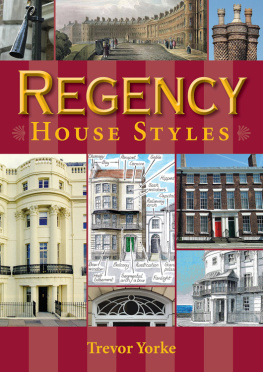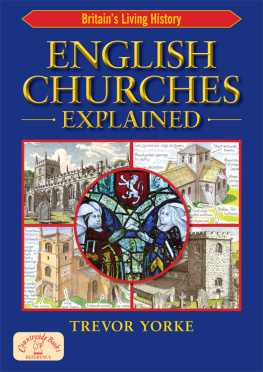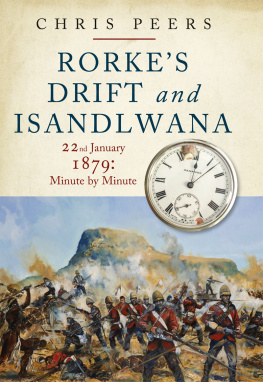For Louise, Madeleine and Emily
CONTENTS
I wish to express my gratitude to many individuals who contributed to this work. The librarians, curators and archivists of the universities of Oxford and Cambridge; the National Army Museum; the London Library; the National Archives, Kew; the Gloucestershire County Records Office; and the Royal Regiment of Wales Museum in Brecon have been particularly helpful. Andrew Orgill, Senior Librarian of RMA Sandhurst Library, and his assistants, Ken Franklin and John Pearce, have provided their usual sterling and often exceptional support. The commissioning editor Jo de Vries and her team at Spellmount have also provided invaluable support, advice and encouragement.
The works and advice of several leading authors and experts in the field, notably Professor John Laband, Mr Ian Knight, John Young, Ron Lock, Peter Quantrill, Lieutenant-Colonel Mike Snook and the late, much-lamented David Rattray, Donald Morris and Frank Emery, have, over the years, jointly provided great inspiration for this book. My most recent 2004 visit to the Rorkes Drift battlefield and attendance at the splendid 125th commemorative dinner held in Isandlwana Lodge, so charmingly hosted by Pat Stubbs, enabled me to renew many old acquaintances and make many new ones. Major Andrew Banks and John Young both provided excellent pictorial support from their extensive private collections to supplement my own field photographs. Mr F.W. Jackson has been a source of great advice and encouragement and the several meetings and dinners we have recently enjoyed together remain treasured memories. Above all, I must thank my great friend Colonel Ian Bennett (RASC retired). Our regular triennial lunches at RMA Sandhurst and joint excursions and research trips have been a wonderful source of intellectual advice and encouragement. Several of my colleagues at RMA Sandhurst have also been of great help, notably my current Head of Department, Dr Duncan Anderson, MA, Dr Gregory Fremont-Barnes, Professor Christopher Duffy, Dr Matthew Bennett and Mr Sean McKnight, MA, Director of Studies. Mention must also be made of the scores of officer cadets and commissioned officers who, over the past twenty-two years, have shared my great enthusiasm for this famous battle.
Above all I must express my deep love and appreciation for the long suffering support of my family, especially my dear wife Louise and daughters, Madeleine and Emily, the former for the long tedious hours of rapid word processing of reams of documents and indecipherable notes, and, the latter, for the many hours of neglect by their elusive Daddy.
I was left behind at a place called Rorkes Drift four thousand of them paid us a visit. When I beheld this swarm I said to myself, All up now, but I was wrong and we all agreed to fight till only two were left and these were to shoot themselves The general said we were a brave little garrison and this showed what a few men could do if they only had the pluck.
Gunner Howard to family, 25 March 1879,
from Emery, Red Soldier, pp. 1334
The dead Zulu lay in piles, in some places as high as the top of the parapet. Some (were) killed by bullets, and the wounds, at that short range, were ghastly but very many were killed by the bayonet. The attack most have been very well pushed home and both sides deserve the credit.
Cmdt Hamilton-Browne, Lost Legionary
Fought on the night of 22/23 January 1879 and immortalised in the film epic Zulu, Rorkes Drift represented one of the most glorious, if subsequently controversial, episodes in British military history. For around twelve desperate hours, outnumbered by over 25:1, barely 140 British and colonial soldiers, based at the remote mission station of Rorkes Drift, Natal, South Africa, were locked in a furious life-or-death struggle with up to 4,000 seasoned Zulu warriors of the hitherto victorious Zulu Army the most powerful indigenous African army of the day. The sheer horror, brutality and intensity of the battle in which no prisoners were taken, matched that of other much larger scale historical sieges such as the Alamo. Only hours earlier, in the shadow of the ominous Sphinx-like Isandlwana Crag, other elements of the same Zulu contingent had virtually annihilated a 1,700-strong British colonial force one of the greatest defeats of Queen Victorias reign. In the wake of this terrible massacre, the survival of the British Empire in South Africa momentarily rested with the tiny garrison of Rorkes Drift.
The main aim of this short introductory book is, by using revised material drawn mainly from my extensive published literature on the Anglo-Zulu War, my own fieldwork studies of the Rorkes Drift battlefield in 1989 and 2004, as well as that of several selected leading contemporary experts, present, for non-specialists and general history enthusiasts, a clear, hopefully balanced and concise analytical narrative of this epic encounter. The opinions expressed in this book are my own and do not reflect those of either the Ministry of Defence or the Royal Military Academy Sandhurst.
HISTORICAL
BACKGROUND
The long-term origins of the Anglo-Zulu War can be traced back to the arrival of the first European settler communities on the South African coast in the mid-nineteenth century. After the Dutch had established a major settlement in Cape Town in 1652, they were superseded, after a limited penetration of the African hinterland, by the British who promptly occupied this crucial strategic area during the Napoleonic Wars. In 1814 the Cape was formally annexed by Britain.
British political and economic pressures, notably the imposition of regularised taxation and the abolition of slavery, encouraged many of the fiercely independent and largely agrarian-based and slave-owning original Dutch settlers or Boers to trek deep into the interior. By the end of the 1830s hundreds of Boer farmers were leaving to escape British rule and, by the 1850s, they had set up two independent republics traversing the Vaal and Orange rivers. Both republics were appropriately named the Orange Free State and the Transvaal. During their protracted diaspora these Boer communities engaged in bitter conflict with neighbouring African peoples, notably the formidable Zulu nation recently united under their great chief Shaka.

Sketch map of South Africa, 1879.
By the mid-nineteenth century this protracted rivalry between these two European groups had reached political stalemate, with the British themselves soon expanding from the Cape to establish, in 1843, a new colony of Natal. With such continued European expansion, African societies became territorially sandwiched between these competing white settler groups. It was an extremely tense situation frequently degenerating into numerous frontier conflicts, notably the nine Cape-Xhosa wars, 17791879.
The pressures were intensified during the 1870s by the decision of the British government to confederate all their South African provinces as a means of both reducing financial cost and enhancing overall security. British politician Lord Carnarvon was appointed to spearhead this lengthy and complex political process. The discovery of diamonds in the 1860s had already accelerated British interest in the region and, in 1877, the British annexation of the bankrupt Transvaal Republic engendered a new crisis between the British and many Boer settlers who, while temporarily powerless to prevent the British takeover, saw it as a further encroachment upon their hard-won liberty.

Next page
















